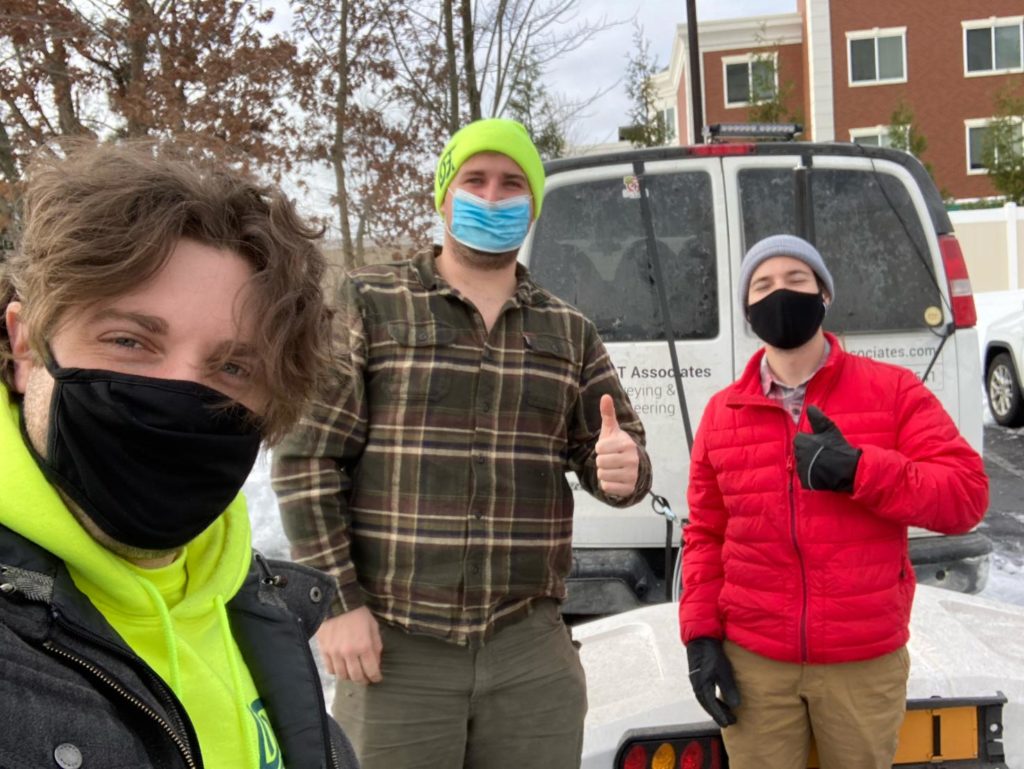Meet Our Crew: Geophysicist and GPR Lead, Mitch Liddell
Meet Our Crew: Geophysicist and GPR Lead, Mitch Liddell

Mitch Liddell is a geophysicist with theoretical and practical experience in seismology, seismic exploration, magnetotellurics, noise interferometry, and ground-penetrating radar. With bachelor’s, master’s, and doctorate degrees in geophysics, Mitch has extensive field experience turning raw data collections into client deliverables and research papers. At DGT, he uses cutting-edge GPR systems to map subsurface utilities. We recently sat down with Mitch to talk about his career path and what he likes best about geophysics.
Let’s start with the basics: what does a geophysicist do?
Geophysics is just physics applied to the earth. Geophysicists use a variety of techniques, like ground-penetrating radar (GPR), or earthquake signals, to identify and classify what’s beneath our feet. It could be right below us, which is what we do with GPR at DGT, or it could be thousands of kilometers deep, which is another type of geophysics that explores all the way to the Earth’s core.
What led you to become a geophysicist?
I started out studying astrophysics (learning about stars). But what I really like about geophysics compared to pure physics or astrophysics is there’s a tangible element to it. Geophysicists can go out into the field and collect their own data. Then they can bring that data into the lab and analyze it themselves to turn it into a report for a client or a paper for an academic conference. With geophysics, you get to participate in the entire cycle of science, whereas if you’re studying a star, you can’t go study it directly. (But wouldn’t that be cool!) I wanted to be hands-on with the entire process.
What brought you to DGT? Is the path you took a traditional one for a geophysicist?
My path is probably not the most traditional because I stayed in school a little longer. A lot of people will get their undergrad degree and then go work in industry. That was really big when I first graduated. My bachelor’s, master’s, and PhD were all in very different fields of geophysics, so I got to use entirely different techniques to explore different parts of the earth. I found that really appealing, and it gave me a more holistic view of geophysics.
What does a typical day at work look like for you?
It’s pretty varied. If we’re collecting data, then I’ll meet with the collection team—I really like that part of the job: running the equipment, making sure we have all of our tools ready and organized, and making sure everything works properly. Going out into the field and collecting data is really interesting. Our GPR instrument is attached to the back of the van, and it sits just above the ground; so we’re sort of like a Zamboni in hockey, going up and down the street, covering the whole area. There’s something really satisfying about seeing the lines fill up the entire street. Once we have the data, I’ll spend about twice the time it takes to collect it analyzing and processing it before sending the results to our engineers or clients.

What types of technology or equipment do you utilize?
We have a 2D and 3D GPR system at DGT. The 2D is a single-channel pushcart system. With the pushcart, it’s me pushing the GPR where I think it needs to go, and if we see something, we mark it with spray paint or chalk so our surveyors can survey it later. This has the advantage of being versatile, fast, and we can access a lot of tight spaces like bike lanes or sidewalks.
We also have a multi-channel 3D GPR, which is sort of the next exponential step up from a 2D system. With the 2D system, we’re taking one line across the street and collecting with one frequency of radar signal. With the 3D system, we’re collecting 24 channels simultaneously with a broad band of radar frequencies, which translates into better depth penetration of the signals. We take radar measurements like these every 3 inches while driving. It’s like the difference between looking at something in HD and looking at it in SD, but both systems have their roles.
When you’re analyzing data, how do you know what to look for?
We take a holistic approach to analyzing data, starting with the history. DGT has a ton of old historical maps that come from long-term records and legacy records, but we also have a lot of industry knowledge that we can apply. So, we start with maps and then apply other techniques, like pipe locating, to fill in gaps.
On top of that, we apply the GPR. Typically, about 10% of what the GPR shows us on any given street wasn’t found on any map or located with any other technique. So, while a lot of what I do is confirming what we already know and applying depths, we always find things we don’t expect, which is pretty exciting.
What do you see for the future of geophysical investigations in underground infrastructure mapping?
There’s a huge opportunity in the US. We’re just getting to the point now where GPR is more commonly used for construction projects and infrastructure projects. The new MassDOT SUE Level B Requirement is a huge step in the right direction and something that DGT has been advocating for for a long time.
Tell us about a recent project that stands out for you.
The one that really stands out is our work with Eversource on the streets of Cambridge. We collected a lot of high-quality data (which always makes me happy). We could see tons of utilities, but I was also seeing a strange recurring feature I couldn’t identify. We knew from our own research that a huge gas pipe should be there, but I couldn’t see the gas pipe at all with the GPR. However, I could see a tiny rectangle (1.5 x 3 feet in size) every 12 feet, and we weren’t sure what it was.
Mike Twohig and I finally figured out that this was probably the way they had been repairing the old gas line. Most likely, they had to dig a little pit every 12 feet to get down and repair the line. That mapped perfectly with the locations we knew from the pipe locating and from our records. For some reason (could be the soil quality, or that the pipe was too deep), the GPR on its own wasn’t able to see the pipe, but it was able to see ancillary information that indicated where it should be. I love projects that require you to use your own knowledge to analyze the data in context, not just in a vacuum.
What advice do you have for someone interested in becoming a geophysicist?
Geophysics can sound opaque and complicated, but it doesn’t have to be that way. It’s a really tangible science. As long as you’re interested in learning about the nitty-gritty of how the techniques we use work, I think it’s an extremely interesting profession. It’s rewarding to be able to say you know a lot about the planet you live on. It’s also a very welcoming field.
For a fun question, what are you reading or listening to these days?
I listen to tons of podcasts. I like learning about history, so my top podcast is “The Rest is History” led by two historians. I also listen to “Hardcore History.”
Learn more about DGT’s SUE/SUM services.
